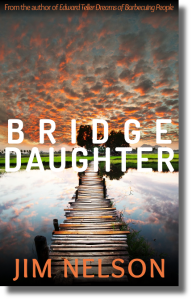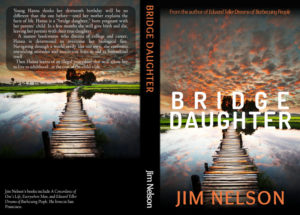 Author Jim Jackson has featured me on his blog today, answering questions about writing, inspiration, and Bridge Daughter. An excerpt:
Author Jim Jackson has featured me on his blog today, answering questions about writing, inspiration, and Bridge Daughter. An excerpt:
I can’t fully explain where the idea for Bridge Daughter came from. One morning while preparing to write a chapter for another book I’m (still) working on, a strange thought struck me: What if we lived in a world where daughters are born as surrogates for their mothers, growing up to young teens and giving birth to the “real” child before dying. Rather than brushing aside this strange notion, I asked myself some questions how a world like this would look. These questions became the kernel for Bridge Daughter.
Check out the full interview as well as Jim Jackson’s web site and books.
